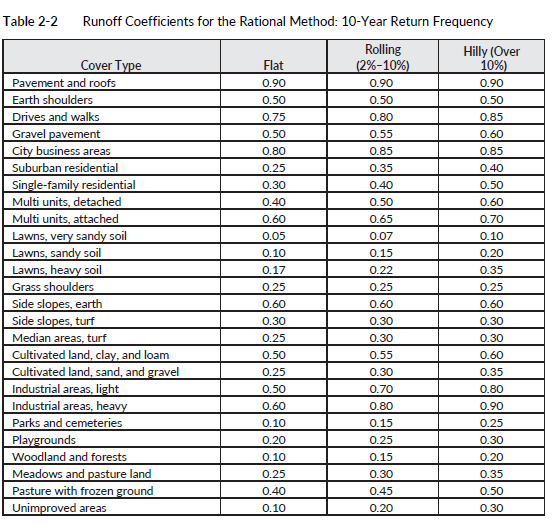The runoff coefficient “C” represents the percentage of rainfall that becomes runoff. The Rational Method implies that this ratio is fixed for a given drainage basin. In reality, the coefficient may vary with respect to prior wetting and seasonal conditions. The use of an average coefficient for various surface types is quite common, and it is assumed to stay constant through the duration of the rainstorm.
When considering frozen ground, PEOs should review Section 2-5.2, No. 3. In a high growth rate area, runoff factors should be projected that will be characteristic of developed conditions 20 years after project construction. Even though local stormwater practices (where they exist) may reduce potential increases in runoff, prudent engineering should still make allowances for predictable growth patterns.
The coefficients in Table 2-2 are applicable for peak storms of 10-year frequency. Less frequent, higher-intensity storms will require the use of higher coefficients because infiltration and other losses have a proportionally smaller effect on runoff. Generally, when designing for a 25-year frequency, the coefficient shall be increased by 10 percent; when designing for a 50-year frequency, the coefficient shall be increased by 20 percent; and when designing for a 100-year frequency, the coefficient shall be increased by 25 percent. The runoff coefficient shall not be increased above 0.95, unless approved by the RHE. Higher values may be appropriate for steeply sloped areas and/or longer return periods, because in these cases infiltration and other losses have a proportionally smaller effect on runoff.

